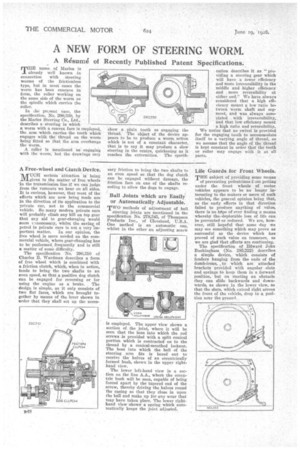A NEW FORM OF STEERING WORM.
Page 74

If you've noticed an error in this article please click here to report it so we can fix it.
A R4sum4 of Recently Published Patent Specifications.
TIED name of Marks is already well known in connection with steering worms of the frictionless type, but in most cases the worm has been concave in form, the roller working on the same side of the worm as the spindle which carries the roller.
In dm prLsent case, the specification, No. 290;330, by the Alarles Steering Co., Ltd., describes a steering in whicha worm with a convex face is employed, the armwhich carries the tooth which engages with the thread on the worm being fitted so that the arm overhangs the worm..
A roller is mentioned as engaging with the Worm; but the drawings onTy show a plain tooth as engaging the thread. The object of the device appears to be to produce a worm action which is not of a constant character, that is to say it may produce a slow steering in the centre, quickening as it
reaches the extremities. The specifi
cation describes it as " pro, viding a steering gear which will have a lower efficiency and more irreversibility in the middle and higher efficiency and more reversibility at either end." We have _always considered that a high efficiency meant a low ratio between worm shaft and segment, and was always associated with irreversibility, and that low efficiency meant a high ratio and reversibility.
We notice that no swivel is provided for the engaging tooth to accommodate itself to a varying angle of thread, so we assume that the angle of the thread is kept constant in order that the tooth or roller may engage with it at all parts.




















































































































